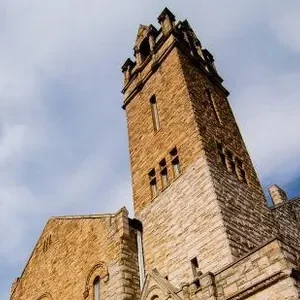The Great Shantz Organ

In 1981, a new pipe organ was installed in the chancel area of the church. A three manual organ of 46 ranks, or sets of pipes, it was designed to enhance and be compatible with the architectural features of the room.
The Great organ, and the Swell organ, the part of the organ enclosed in a large box with shutters, are on the left side of the chancel. The Positive organ and the Pedal organ are located on the right side. The placement of the pipes allows for maximum egress of sound, which is optimal for leading congregational hymns, accompanying choral works, and performing organ works of all periods.
In 1995 and in 2006, additions were made to the organ for increased versatility to make the instrument one of the most successful in the area. Each year, a Midday Music Series is featured from May through September with area organists and instrumentalists as well as guest organists from other cities and states. Plans are under way to have a guest organist of international repute to perform annually on the splendid and eclectic instrument.
Bell Tower

In response to a New Year’s sermon about spreading the Gospel, James R. Gilliam had a set of ten bells called a “chime” installed in the tower of Court Street Methodist Church in 1909. These bells comprised the eight pitches of the scale of F with an added E flat and G.
The lowest bell (F) or tenor bell, weighed 1,800 pounds and the total net weight of the bells was 7,200 pounds. A console for playing the bells was located on the 2nd floor of the tower and was connected to the bell clappers by a mechanism that extended to the top of the tower, approximately seven stories high.
In addition to calling parishioners to worship, the bells, which could be heard widely over downtown Lynchburg, were featured in concerts with published programs. They were also used to announce news of both joy and sadness to the whole community.
More recently, the C. Lynch Christian family made it possible for the bell mechanism to be modified to allow the bells to be played electronically, both from a small keyboard at the base of the tower, and also from a computerized panel in the tower. This has allowed the bells to chime the hour and quarter-hours, as well as to peal and toll the bells.
